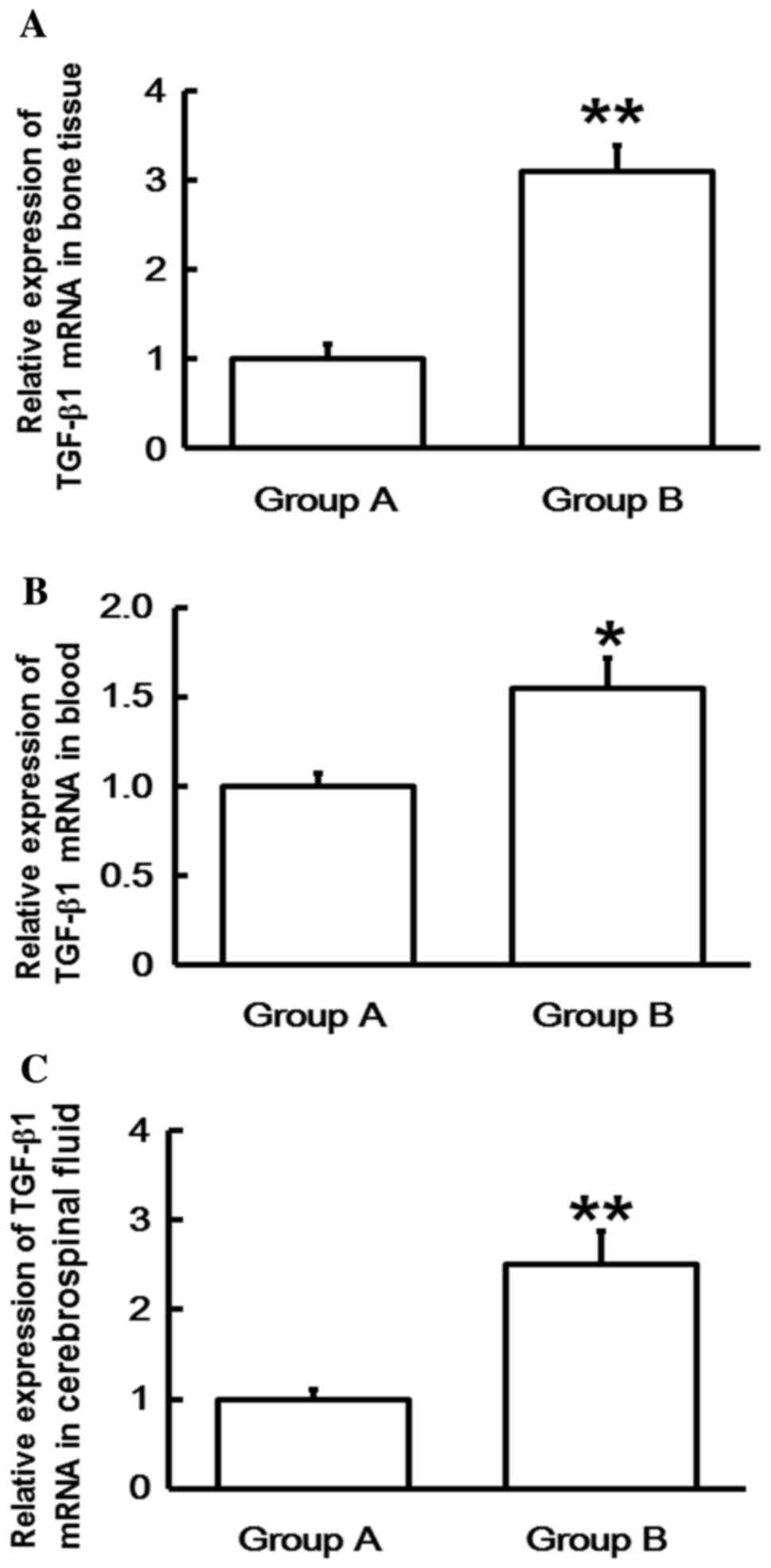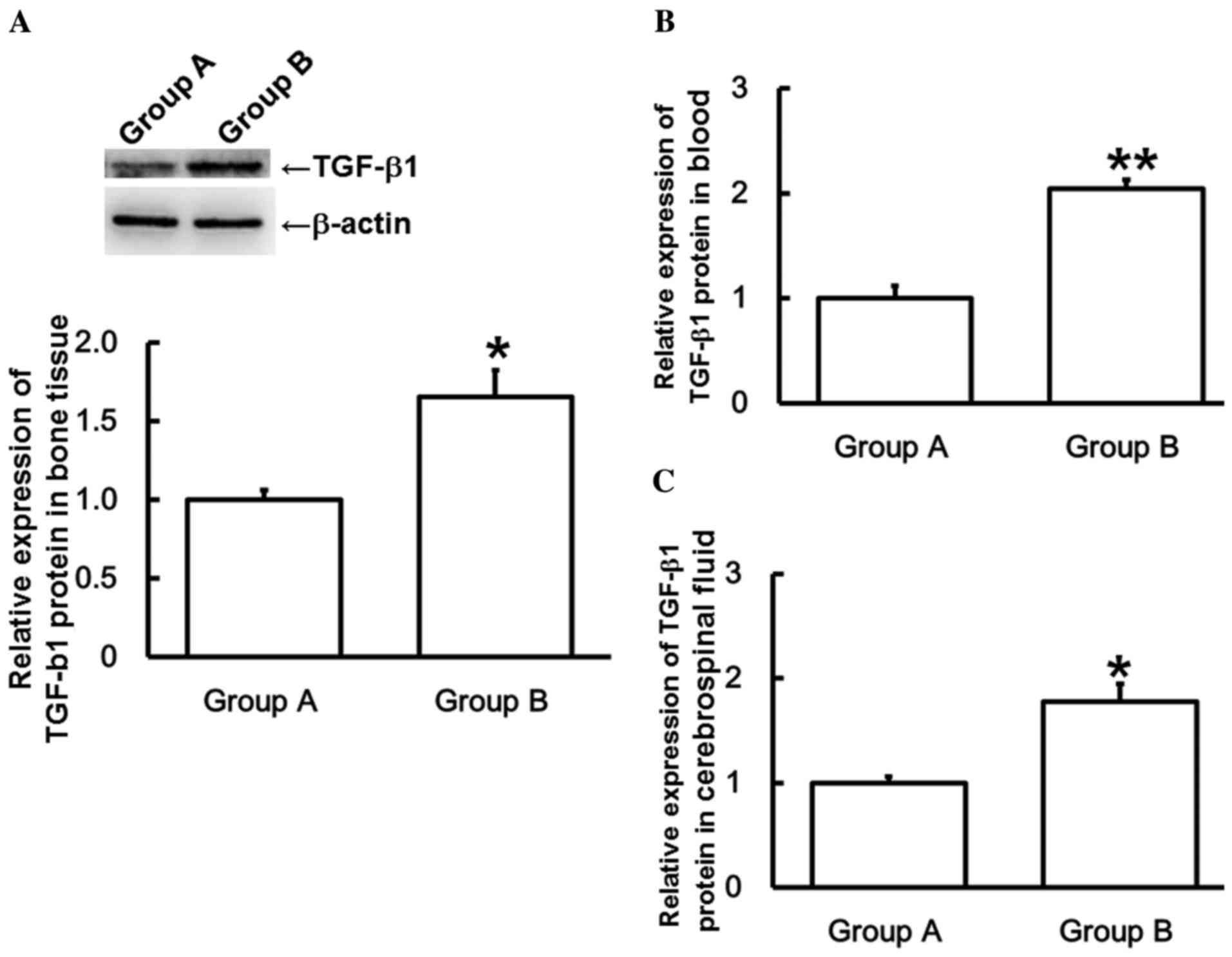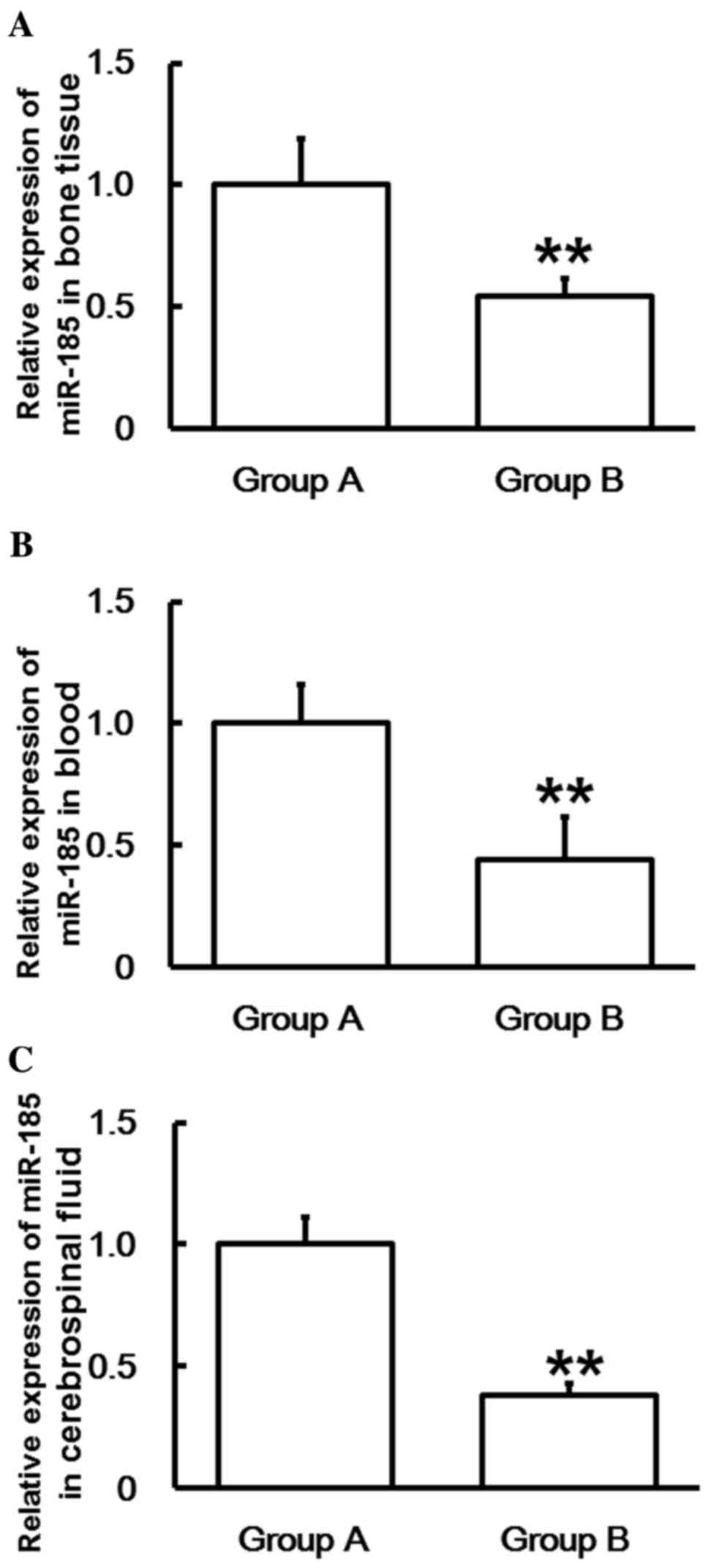|
1
|
Silverman SL: The clinical consequences of
vertebral compression fracture. Bone. 13:(Suppl 2). S27–S31. 1992.
View Article : Google Scholar : PubMed/NCBI
|
|
2
|
Brown DB, Gilula LA, Sehgal M and Shimony
JS: Treatment of chronic symptomatic vertebral compression
fractures with percutaneous vertebroplasty. AJR Am J Roentgenol.
182:319–322. 2004. View Article : Google Scholar : PubMed/NCBI
|
|
3
|
Kwon BK, Tetzlaff W, Grauer JN, Beiner J
and Vaccaro AR: Pathophysiology and pharmacologic treatment of
acute spinal cord injury. Spine. 4:451–464. 2004. View Article : Google Scholar
|
|
4
|
Hao D, He L and Yuan F: Late complications
in patients with spinal cord injuries and related factors. Zhongguo
Jizhu Jisui Zazhi. 15:267–270. 2005.
|
|
5
|
Lee KZ and Chang YS: Recovery of the
pulmonary chemoreflex and functional role of bronchopulmonary
C-fibers following chronic cervical spinal cord injury. J Appl
Physiol (1985). 117:1188–1198. 2014. View Article : Google Scholar : PubMed/NCBI
|
|
6
|
Murata K, Ito H, Yoshitomi H, Yamamoto K,
Fukuda A, Yoshikawa J, Furu M, Ishikawa M, Shibuya H and Matsuda S:
Inhibition of miR-92a enhances fracture healing via promoting
angiogenesis in a model of stabilized fracture in young mice. J
Bone Miner Res. 29:316–326. 2014. View Article : Google Scholar : PubMed/NCBI
|
|
7
|
Sheyn D, Kallai I, Tawackoli W, Yakubovich
D Cohn, Oh A, Su S, Da X, Lavi A, Kimelman-Bleich N, Zilberman Y,
et al: Gene-modified adult stem cells regenerate vertebral bone
defect in a rat model. Mol Pharm. 8:1592–1601. 2011. View Article : Google Scholar : PubMed/NCBI
|
|
8
|
Hulth A: Current concepts of fracture
healing. Clin Orthop Relat Res. 249:265–284. 1989.
|
|
9
|
Tatsuyama K, Maezawa Y, Baba H, Imamura Y
and Fukuda M: Expression of various growth factors for cell
proliferation and cytodifferentiation during fracture repair of
bone. Eur J Histochem. 44:269–278. 2000.PubMed/NCBI
|
|
10
|
Kiefer R, Streit WJ, Toyka KV, Kreutzberg
GW and Hartung HP: Transforming growth factor-beta 1: A
lesion-associated cytokine of the nervous system. Int J Dev
Neurosci. 13:331–339. 1995. View Article : Google Scholar : PubMed/NCBI
|
|
11
|
Flanders KC, Ren RF and Lippa CF:
Transforming growth factor-betas in neurodegenerative disease. Prog
Neurobiol. 54:71–85. 1998. View Article : Google Scholar : PubMed/NCBI
|
|
12
|
Hiraizumi Y, Fujimaki E, Transfeldt EE,
Kawahara N, Fiegel VD, Knighton D and Sung JH: The effect of the
platelet derived wound healing formula and the nerve growth factor
on the experimentally injured spinal cord. Spinal Cord. 34:394–402.
1996. View Article : Google Scholar : PubMed/NCBI
|
|
13
|
Livak KJ and Schmittgen TD: Analysis of
relative gene expression data using real-time quantitative PCR and
the 2(−Delta Delta C(T)) Method. Methods. 25:402–408. 2001.
View Article : Google Scholar : PubMed/NCBI
|
|
14
|
Jia L: Modern spinal surgery. 1st.
People's Military Medical Press; Beijing: pp. 848–859. 2007
|
|
15
|
Tian W: Practical Orthopedics (1st).
People's Medical Publishing House. Beijing: 562–563. 2008.
|
|
16
|
Wu T, Liu Y, Fan Z, Xu J, Jin L, Gao Z, Wu
Z, Hu L, Wang J, Zhang C, et al: miR-21 Modulates the
Immunoregulatory Function of Bone Marrow Mesenchymal Stem Cells
Through the PTEN/Akt/TGF-β1 Pathway. Stem Cells. 33:3281–3290.
2015. View Article : Google Scholar : PubMed/NCBI
|
|
17
|
Canalis E, McCarthy T and Centrella M:
Growth factors and the regulation of bone remodeling. J Clin
Invest. 81:277–281. 1988. View Article : Google Scholar : PubMed/NCBI
|
|
18
|
Pfeilschifter J, Diel I, Scheppach B,
Bretz A, Krempien R, Erdmann J, Schmid G, Reske N, Bismar H, Seck
T, et al: Concentration of transforming growth factor beta in human
bone tissue: Relationship to age, menopause, bone turnover and bone
volume. J Bone Miner Res. 13:716–730. 1998. View Article : Google Scholar : PubMed/NCBI
|
|
19
|
Joyce ME, Roberts AB, Sporn MB and
Bolander ME: Transforming growth factor-beta and the initiation of
chondrogenesis and osteogenesis in the rat femur. J Cell Biol.
110:2195–2207. 1990. View Article : Google Scholar : PubMed/NCBI
|
|
20
|
Centrella M, McCarthy TL and Canalis E:
Transforming growth factor beta is a bifunctional regulator of
replication and collagen synthesis in osteoblast-enriched cell
cultures from fetal rat bone. J Biol Chem. 262:2869–2874.
1987.PubMed/NCBI
|
|
21
|
Unsicker K and Krieglstein K: TGF-betas
and their roles in the regulation of neuron survival. Adv Exp Med
Biol. 513:353–374. 2002. View Article : Google Scholar : PubMed/NCBI
|
|
22
|
Tyor WR, Avgeropoulos N, Ohlandt G and
Hogan EL: Treatment of spinal cord impact injury in the rat with
transforming growth factor-beta. J Neurol Sci. 200:33–41. 2002.
View Article : Google Scholar : PubMed/NCBI
|
|
23
|
Want T and Feng Z: Polypeptide growth
factors and spinal cord injury. Health Science and Technology
Publishing House in Xinjiang; Fitst. Urumqi: pp. 104–105. 2003
|
|
24
|
Romão JE Junior, Haiashi AR, Vidonho AF
Junior, Abensur H, Quintaes PS, Araújo MR, Noronha IL, Santos FR
and Machado MM: Causes and prognosis of acute renal failure in
elderly patients. Rev Assoc Med Bras (1992). 46:212–217. 2000.(In
Portuguese). PubMed/NCBI
|
|
25
|
Gudi V, Škuljec J, Yildiz Ö, Frichert K,
Skripuletz T, Moharregh-Khiabani D, Voss E, Wissel K, Wolter S and
Stangel M: Spatial and temporal profiles of growth factor
expression during CNS demyelination reveal the dynamics of repair
priming. PLoS One. 6:e226232011. View Article : Google Scholar : PubMed/NCBI
|
|
26
|
Kim D, Schallert T, Liu Y, Browarak T,
Nayeri N, Tessler A and Murray M Fischer: Transplantation of
genetically modified fibroblasts expressing BDNF in adult rats with
a subtotal hemisection improves specific motor and sensory
functions. Neurorehabil Neural Repair. 15:141–150. 2001. View Article : Google Scholar : PubMed/NCBI
|
|
27
|
Zhao X, Mohan R, Özcan S and Tang X:
MicroRNA-30d induces insulin transcription factor MafA and insulin
production by targeting mitogen-activated protein 4 kinase 4
(MAP4K4) in pancreatic β-cells. J Biol Chem. 287:31155–31164. 2012.
View Article : Google Scholar : PubMed/NCBI
|
|
28
|
Chen K and Rajewsky N: The evolution of
gene regulation by transcription factors and microRNAs. Nat Rev
Genet. 8:93–1037. 2007. View
Article : Google Scholar : PubMed/NCBI
|
|
29
|
Lewis BP, Burge CB and Bartel DP:
Conserved seed pairing, often flanked by adenosines, indicates that
thousands of human genes are microRNA targets. Cell. 120:15–20.
2005. View Article : Google Scholar : PubMed/NCBI
|
|
30
|
Bai W, Chen Y, Yang J, Niu P, Tian L and
Gao A: Aberrant miRNA profiles associated with chronic benzene
poisoning. Exp Mol Pathol. 96:426–430. 2014. View Article : Google Scholar : PubMed/NCBI
|
|
31
|
Kim JO, Song DW, Kwon EJ, Hong SE, Song
HK, Min CK and Kim DH: miR-185 Plays an Anti-Hypertrophic Role in
the Heart via Multiple Targets in the Calcium-Signaling pathways.
PLoS One. 10:e01225092015. View Article : Google Scholar : PubMed/NCBI
|
|
32
|
Ma X, Shen D, Li H, Zhang Y, Lv X, Huang
Q, Gao Y, Li X, Gu L, Xiu S, et al: MicroRNA-185 inhibits cell
proliferation and induces cell apoptosis by targeting VEGFA
directly in von Hippel-Lindau-inactivated clear cell renal cell
carcinoma. Urol Oncol. 33:169.e1-112015. View Article : Google Scholar : PubMed/NCBI
|
|
33
|
Bao L, Fu X, Si M, Wang Y, Ma R, Ren X and
Lv H: MicroRNA-185 targets SOCS3 to inhibit beta-cell dysfunction
in diabetes. PLoS One. 10:e01160672015. View Article : Google Scholar : PubMed/NCBI
|
|
34
|
Fu P, Du F, Yao M, Lv K and Liu Y:
MicroRNA-185 inhibits proliferation by targeting c-Met in human
breast cancer cells. Exp Ther Med. 8:1879–1883. 2014.PubMed/NCBI
|
|
35
|
Wang R, Tian S, Wang HB, Chu DP, Cao JL,
Xia HF and Ma X: MiR-185 is involved in human breast carcinogenesis
by targeting Vegfa. FEBS Lett. 588:4438–4447. 2014. View Article : Google Scholar : PubMed/NCBI
|
|
36
|
Chang CZ, Wu SC, Lin CL and Kwan AL:
Curcumin, encapsulated in nano-sized PLGA, down-regulates nuclear
factor κB (p65) and subarachnoid hemorrhage induced early brain
injury in a rat model. Brain Res. 1608:215–224. 2015. View Article : Google Scholar : PubMed/NCBI
|

















